Travel eSim: The Ultimate Guide to Staying Connected While Traveling
Are you tired of expensive international roaming charges? Do you want to avoid the hassle of switching SIM cards each time you travel? Then, you should learn more about travel eSIMs. Nowadays, more international tourists are using them to spend less on telecom fees during overseas trips.
These digital SIM cards are more convenient than conventional ones because you do not need to replace your existing SIM. Instead, you can sign up and set up an international eSIM in minutes. Moreover, you may already have a phone that supports travel eSIMs, so using them maximizes the functionality of your device.
This article will discuss what travel eSIMs are and how they work. Then, I will cover how to use a travel eSIM on your iPhone and Android. Later, I will explain the advantages and disadvantages of this mobile add-on, so you can decide whether or not to use them.
What is a travel eSIM?
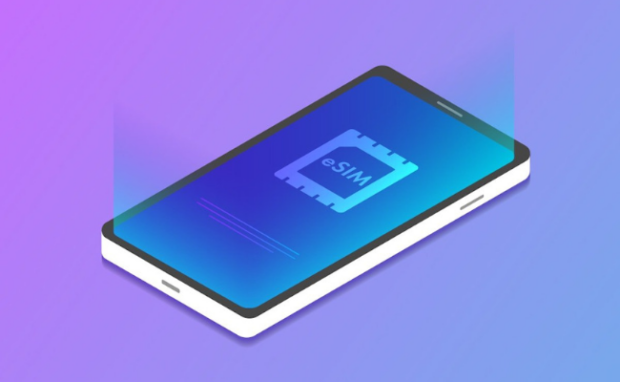
Photo Credit: whistleout.com.au
An eSIM is a digital equivalent of traditional SIM cards. It enables your phone to send texts, make phone calls, and access the internet using a telecommunications service.
Phones have SIM slots hidden inside them, and you usually set them up after buying a new device. In contrast, eSIMs don’t require adjusting your phone’s physical components.
That’s because some smartphones already have eSIMs. After all, that acronym stands for “embedded Subscriber Identity Module.” That means you do not need to install an eSIM. Instead, you activate it by registering on the network available in your chosen country.
More devices support eSIMs nowadays, especially iOS gadgets. They are available on iPhone XR, XS, and later models. The US version of the iPhone 14 only has eSIM support.
The Apple Watch and some iPad models have had it since late 2017. Nowadays, more Android phones support digital SIMs, such as Samsung. In 2016, it bundled an eSIM into the Gear S2 smartwatch.
Moreover, Google Pixel smartphones have been supporting eSIMs since 2017. Check your phone model online to confirm it supports travel eSIMs. Also, you should check if you will head to a country that supports that technology.
Otherwise, you can’t use an eSIM during your trip abroad. Fortunately, Apple and other smartphone companies list countries that support that technology.
Choosing the best eSIM Providers
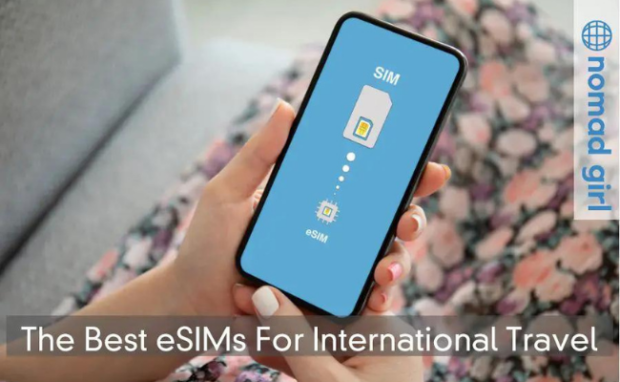
Photo Credit: nomadgirl.co
Numerous countries have been launching various digital services to improve tourism. That is why you can find many eSIM providers offering various plans.
You should know how to choose the best eSIM plans by looking beyond affordable prices. Ask you and your eSIM data provider the following questions:
- Where are you traveling? Your destination will determine the eSIM data plans available. Only a few services, like the Airalo app, support cellular data in multiple destinations.
- How long will you stay overseas? Data plans usually last a few days, so choose one that lasts as long as your vacation. For example, choose unlimited data plans that last 15 days if you will stay in South Korea for two weeks.
- What is the service quality? ESIM providers must exhibit the following characteristics: latency, speed, and coverage. You can check these factors on their website or send an inquiry via email or chat with their support team.
- Does this eSIM data plan have activation security? An eSIM is the digital version of a physical SIM, offering the same authentication mechanisms. However, you may only activate them online via QR or referral code. Also, choose an eSIM provider with a long referral code for reliable security.
- Can you find a local data plan? Local eSIM providers are safer than global providers because you can hold them accountable to local laws and regulations. That is especially true for data security and privacy.
- Does your eSIM provider have reliable customer support? Some customers find eSIM data plans easy to activate and use, while others require assistance. First-time users should look for eSiM providers that have 24/7 support so they can solve international travel issues.
- Does the price fit your budget? Of course, you should pick eSIM data plans that offer the most value for your money. Look for an affordable plan that offers your desired features. For example, get a digital SIM card with a mobile hotspot function, so you and your family can stay connected without having separate eSIM data plans.
What are the types of eSIMs?
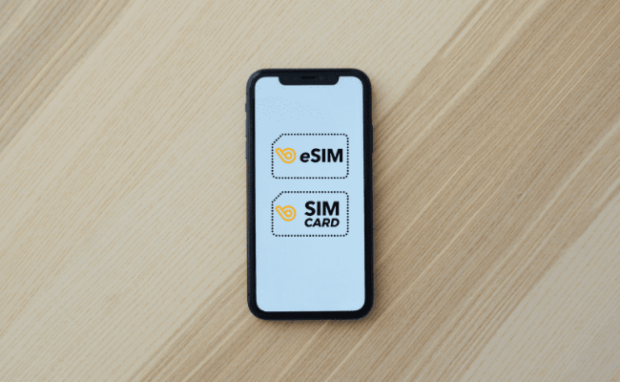
Photo Credit: indonesiaexpat.id
You can choose two eSIM data plan types: “Data Only” and “Voice, SMS, and Data.” Also, you can divide those categories into their data coverage.
These subcategories are local, regional, and global data plans. I will discuss the larger data plan division before covering the subs. Read below to learn more:
Data-Only eSIM
As the name suggests, a data-only SIM card only uses cellular data. They help you more reliably stay connected than other data plans because they link you to major global networks.
A data-only eSIM works where you bought it and in some other countries. For example, a Holafly eSiM works in 34 European countries like Belgium, Italy, and the United Kingdom.
This eSIM is best if you only need cellular data for internet access. For example, data-only eSIMs are great if you only need to browse Twitter during international travel.
It is also ideal for business trips when you need to open emails or documents on the move. Nowadays, numerous data plans are available for casual and business users.
You can get an eSIM plan that offers unlimited data for your favorite social media platforms. Moreover, you could acquire a mobile hotspot for your coworkers.
Voice, SMS, and Data eSIM
This next data plan is an all-inclusive option offering standard mobile services. Here are some of the features you should expect in the best eSIM cards:
- Global roaming coverage
- Fixed rates across a specific continent, like Europe
- A separate +44 phone number
- Unlimited data plans with 5G
These flexible data plans offer essential features and data usage within your budget. This SIM lets you use cellular data without worrying about exorbitant international travel fees.
More importantly, the Voice, SMS, and Data eSIM plans offer reliable coverage that does not lag or disconnect. Also, the eSIM apps let you access these features on your phone for convenient access.
Local, regional, and global eSIM plans
You can divide eSIM plans according to their area coverage. The first one is called a local eSIM. As the name suggests, it only lets you connect to one country.
It is a great option if you only spend your trip in one location. For example, you can get a Philippine eSIM if you only hang out in Boracay for two weeks.
You may also like: Google Travel Shows Country Health Restrictions
You can also get regional eSIM plans, which let you connect across several countries in one region. For instance, the Holafly eSIM plan offers cellular data in European countries.
It is suitable for international travel to multiple countries, such as cruises. Lastly, you can get a global eSIM if you travel to numerous countries across several continents.
They usually offer more data than the other two because global trips usually last months. That is why they typically offer the most expensive eSIM plan.
How much data do I need?

Photo Credit: keepgo.com
You should consider your data usage when picking an eSIM plan. They offer set amounts of data and eSIM apps that let you add data when you run out.
Some companies offer unlimited data usage within a limited period. The amount you need depends on your data usage when you travel. For example, Korean smartphone company Samsung says 1GB of data is enough for 20-30 minutes of internet use.
I will break down the cellular data required for specific weekly tasks. Note that your mileage will depend on several factors, such as how many apps you open per usage:
- Using Google Maps for directions: 840 MB
- Listening to music: 1 GB
- Searching on Google: 1.26 GB
- Using social media: 1.26 GB
- Making calls with online apps: 2.52 GB
- Streaming shows or movies: 9.8 GB
- Watching YouTube videos: 15.75 GB
Then, I will show you how much you need if they last a month. Again, you might need more data if you use multiple apps while performing the following tasks:
- Using Google Maps for directions: 3.6 GB
- Listening to music: 4.3 GB
- Searching on Google: 5.4 GB
- Using social media: 5.4 GB
- Making calls with online apps: 10.8 GB
- Streaming shows or movies: 42 GB
- Watching YouTube videos: 67 GB
Understanding data roaming
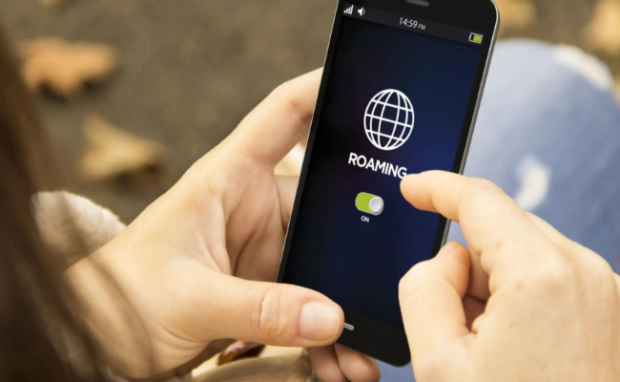
Photo Credit: howtogeek.com
What if you don’t want to choose an eSIM plan? Then, you can activate your phone’s data roaming feature, enabling you to link to your destination’s network.
The visited network identifies your home country and network. Then, it verifies if it has a roaming agreement with your telecom provider.
If it does, then you can connect to the visited network. Consequently, you can make calls, send emails, and use apps like you would on your home network.
However, data roaming’s biggest drawback is its high cost. Here are the average costs of performing the following tasks on this feature:
- $0.25 per minute of voice calls
- $0.10 per text message
- $2.00 to $5.00 per MB of data
If you’re not careful, you can accumulate tens of thousands of dollars in roaming fees! Fortunately, eSIM plans let you spend significantly less for more data.
Suppose you are going on a month-long trip to several European countries. You can pay $64.00 for the eSIM data plan of the eSIM provider Holafly.
Unlimited data means surfing the web, browsing social media, watching online videos, and doing other things without raising more data charges.
Whether you will use eSIM plans or not, you should know how to switch off and on this feature. Otherwise, you may accumulate thousands of data charges unintentionally.
How to adjust data roaming
Use these instructions if you have an iPhone. Remember that you may need to follow different steps if iOS gains a significant upgrade:
- Go to your phone’s Settings.
- Next, tap the Mobile Data button.
- Select the Mobile Data Options.
- Then, switch on or off the Data Roaming option.
You have different instructions if you are using an Android phone. Like iPhones, you may need to follow different steps depending on your smartphone brand:
- Open the Settings option.
- Next, tap on the Connections option.
- Go to the Mobile Networks option.
- Then, toggle off or on the Data Roaming section.
How do eSIMs work?
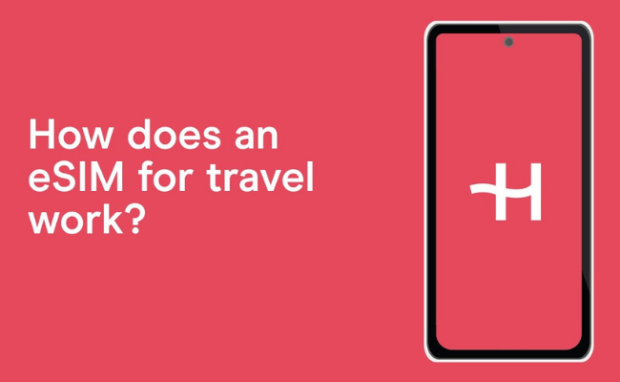
Photo Credit: youtube.com
ESIMs work differently from roaming services despite having similar features. Every eSIM has a unique number called an Integrated Circuit Card Identifier, also found in physical SIM cards.
The ICCID identifies your eSIM to a local carrier. Also, you must submit that to your network to activate your eSIM. Then, it will activate your eSIM and assign it a telephone number.
The entire process is typically quick and easy. You do not have to go to a physical location to execute it. The ICCID is also inside a chip in your phone.
That means you cannot remove and put it into another device like a physical SIM. Moreover, breaking or losing your phone means getting a new eSIM from your carrier.
How to install an eSIM
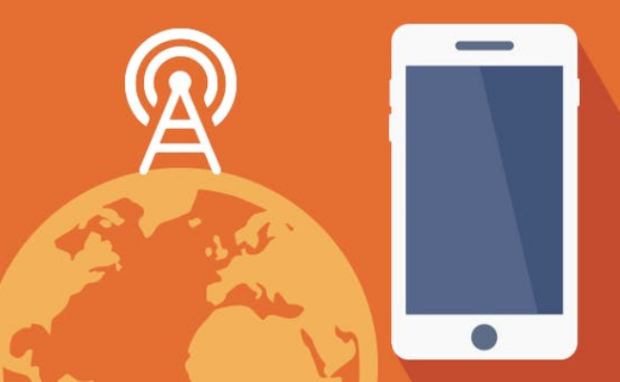
Photo Credit: techieword.com
You must install its SIM card once you find a good eSIM provider. It requires an internet connection to start the following installation processes:
- Direct: You must follow your eSIM provider’s prompts to install your card.
- QR Code: Scan a Qr code to begin the installation.
- Manual: Enter eSIM data manually in your device settings.
The installation will also ask you to label your eSIM line. Select a name that will let you identify the eSIM plan. This tip is especially handy if you have numerous eSIMs on your device.
For example, you can name yours “Europe eSIM” if you will tour that continent. If you have a separate eSIM for Spain, you can name it “Spain eSIM.”
How to activate an eSIM card
You may wait a while before your eSIM activates. You can check the estimated completion time by opening its “Additional Information” section.
Look for the activation policy, which tells you when the eSIM’s validity period will start. Some will activate immediately upon installation. Others turn on when you link to a supported network at your destination.
If your eSIM activates immediately, you should install it before you travel. Consequently, you ensure the eSIM plan starts while on a trip.
That allows you to maximize your cellular data use. In contrast, you can install it immediately If it activates when connecting to a mobile network.
Connect to a supported network

Photo Credit: metaswitch.com
Turn on your eSIM line to connect to a local carrier and go online once you arrive at your destination. Follow these instructions if you have an iOS device:
- Go to Settings.
- Tap Cellular or Mobile.
- Next, tap your eSIM line.
- Toggle on Turn On This Line.
- Then, switch on Roaming.
- Tap Network Selection and choose a supported network. You can find a list of networks in the eSIM’s Additional Information section.
You must follow different instructions if you have an Android phone. Note that these may change depending on your phone brand and recent update:
- Go to Settings.
- Tap Network & Internet.
- Next, select Mobile Network.
- Turn on your eSIM.
- Then, toggle on Mobile Data.
- Turn on Roaming.
- Afterward, choose a supported network. You can find a list of networks in the eSIM’s Additional Information section.
Maximizing cellular data with an eSIM
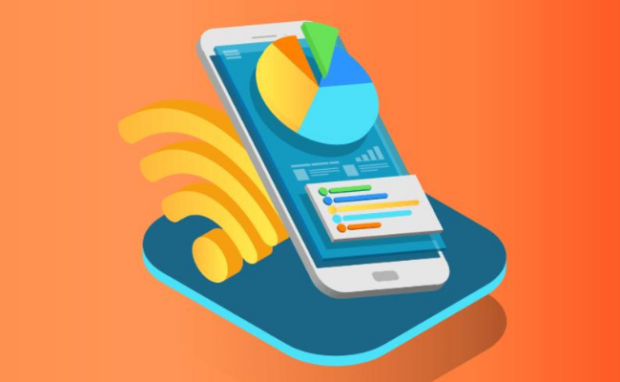
Photo Credit: selectra.co.uk
You want to ensure you maximize value for money when using an eSIM. That is why you should choose your eSIM carefully. Look for these features when selecting eSIM plans:
Data: Confirm how much data your eSIM plan offers. On the other hand, you can choose one that offers unlimited data for a specific duration.
Validity period: See how long you can use the eSIM. This tip is especially useful if you have an eSIM plan with unlimited data.
- Price: Check your eSIM provider for options that fit your budget.
- Location: This factor determines where you can use the eSIM.
- Network: You can choose various network types for more speed, such as 5G, LTE, and 4G.
- Plan type: As mentioned, you can choose data-only and Voice, SMS, and Data plans.
- Activation policy: Some plans activate immediately after installation. Meanwhile, others start when you connect to a supported local carrier.
- eKYC: This acronym stands for “embedded Know Your Customer,” a client verification feature. Some countries require you to submit and verify travel documents before downloading eSIM plans. Complete these requirements before your departure to avoid delays and other issues.
- Top-Up option: Choosing an eSIM provider that lets you reload your data usage on its app is ideal. Consequently, you can remain connected if you run out of data.
Select the right data plan
You should confirm the locations you will go to before purchasing an eSIM. That ensures you can control the money you spend on data use. Let us say you only got a local eSIM for your trip to France.
However, you accessed the internet on the layover flights. As a result, you will spend significantly more money on data. You need a regional eSIM for those situations. If you will tour numerous countries, consider using a global eSIM to control your expenses.
Fortunately, providers list their available options on their websites. For example, the Holafly eSIM store divides local, regional, and global options for easy access.
Store multiple eSIMs on your phone
Some eSIM companies let you store multiple plans. Your phone will save them as eSIM profiles you can toggle off and on whenever. Consequently, you can easily connect to different local networks when you travel.
You can also switch between mobile plans at home, using one for calls and texts and another for data. Here are the other advantages of having several eSIMs:
- Easily switch data plans whenever depending on your location.
- You do not have to fiddle with numerous physical SIM cards while traveling.
- You can keep your primary number active for calls, texts, and two-factor authentication. Meanwhile, you can access the internet affordably with your eSIM.
- You can install different eSIMs for multi-country trips. This tip is ideal if regional plans cover too many countries you will not visit. You can assign different eSIMs to two or more nations to keep costs low.
Track your data usage
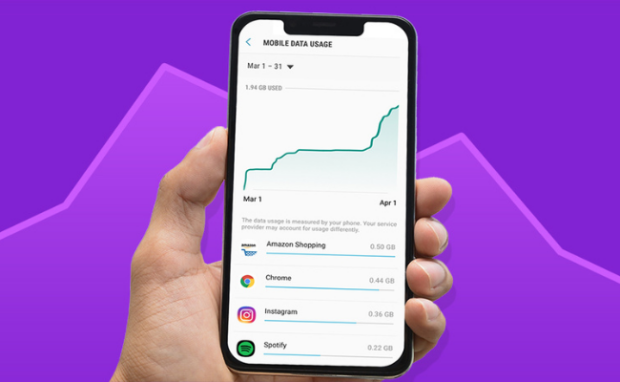
Photo Credit: www.asurion.com
You should check your data use regardless of your unlimited data plan. That will let you confirm that you are not using roaming data and spending on it.
This tip is especially important if you have limited data. It will ensure that you do not exceed your plan limit. More importantly, you can top-up immediately if necessary.
Some eSIM companies offer apps where you can check data use. On the other hand, other providers remind users to check that on their phone settings.
Turn on Push Notifications
You can set your eSIM app to notify you if data usage drops to a specific level. For example, it can inform you if you have 25% of data remaining or if your SIM card will expire in three days.
However, you must activate the Push Notification feature on your mobile device. Here’s how you can do it on your iPhone. Note that these steps may change if iOS releases an update:
- Head to Settings.
- Then, tap Notifications.
- Next, select your eSIM app.
- Turn on Allow Notifications and choose your alert style.
You may also like: ChatGPT Helped Create The My Philippines Travel Level Website
Of course, you can activate Push Notifications on your Android device. Again, these instructions may differ depending on your smartphone brand and software version:
- Go to Settings.
- Next, tap Notifications.
- Open the App Settings.
- Then, tap All Apps in the dropdown menu.
- Tap your eSIM app.
- Afterward, turn on notifications.
Set up an eSIM hotspot
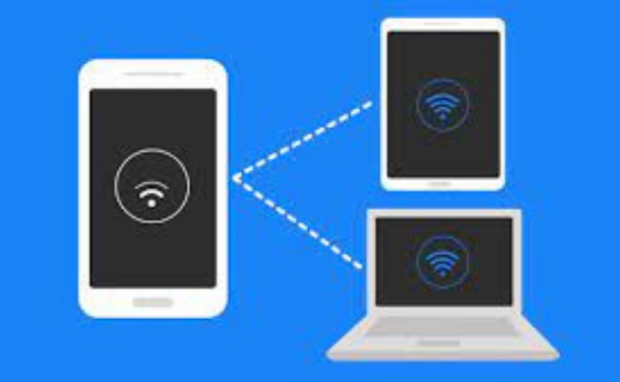
Photo Credit: att.com
You can share your data plan with your colleagues or friends by turning your phone or laptop into a mobile hotspot. That is handy if you need to send a work document securely.
You and your coworkers can keep your files safe using a secure connection. Also, a mobile hotspot lets you join a video conference if public Wi-Fi isn’t safe.
A hotspot shares data by tethering to another device via USB, Bluetooth, or Wi-Fi. The most common approach is to turn your phone into one.
Other devices will detect it as a Wi-Fi network with a password. As a result, you can keep strangers from entering your online connection.
You can set up hotspots in multiple ways on Android and iOS. However, you should confirm your eSIM company allows mobile hotspot sharing.
The benefits of eSIMs
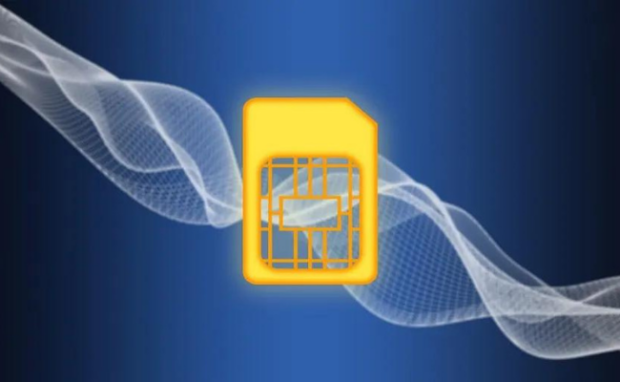
Photo Credit: forbes.com
The biggest advantage of using eSIMs over physical ones is the lower data costs. However, these digital SIM cards have other benefits, such as:
- You can link to multiple networks without carrying several SIMs. Also, you do not have to constantly replace your SIM, which is a finicky, time-consuming process.
- You do not need to worry about losing or damaging your SIM. Like its namesake, your phone has it embedded internally. You can only misplace it if you lose your phone.
- Setting up an eSIM is easier and quicker than installing a physical SIM. Your provider handles most installation processes, so your digital SIM is ready in seconds.
The issues with eSIMs
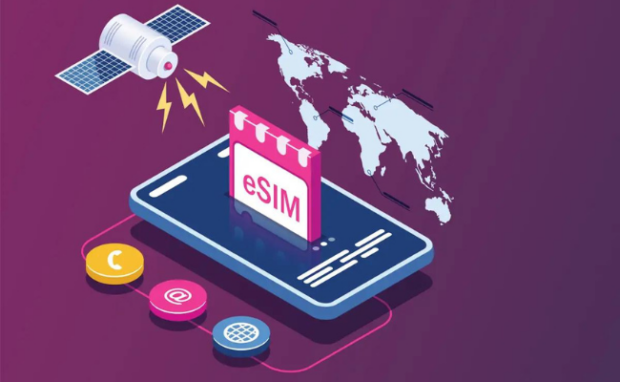
Photo Credit: idgconnect.com
Digital SIMs have their disadvantages too. You should understand their limitations to maximize their features fully. Read the following to learn more:
- Many phones are incompatible with eSIMs. That is why you should confirm your phone supports this technology before buying a digital SiM.
- Some mobile carriers do not support eSIMs. For example, T-Mobile, Sprint, AT&T, and Verizon offer eSIMs but have limited overseas support.
- Some eSIM providers do not allow sharing internet access via mobile hotspots. If you want to share a plan using these devices, discuss it with your provider.
Conclusion
Use an eSIM to remain connected to your loved ones no matter where you are. It is also a great way to save money on cellular data fees and get other features.
You have numerous choices, depending on where you will go. Check the options available in your destination before purchasing an eSIM subscription.
You can also access the latest digital trends anytime and anywhere on Inquirer Tech. Follow the website for more tips on apps, gadgets, artificial intelligence, etc.
Frequently asked questions about international eSIMs
How does a travel eSIM work?
A travel eSIM digitally stores the necessary SIM card information on your device. When you arrive in a new country, you can download and activate an eSIM profile for that specific destination. This profile enables your device to connect to a local network without requiring a physical SIM card swap.
How do I manage my eSIM?
Most eSIM providers offer a mobile app or web portal where you can manage your eSIM. Specifically, they let you monitor data use, add credit, and purchase additional plans if needed. You can check your usage, update settings, and view billing information through the provider’s platform.
Can I use an eSIM in my home country?
While eSIMs are primarily designed for international travel, some providers may offer domestic eSIM options for use within your home country. Check with your eSIM provider to see if they offer such services or have separate plans for domestic use.
Is my device compatible with eSIMs?
Not all devices support eSIM technology, such as old and budget smartphones. However, many smartphones, tablets, and smartwatches now have eSIM capabilities. Check your device specifications or contact the manufacturer to determine if it is compatible with travel eSIMs.
Should you use an eSIM?
International eSIMs are usually the best choice if you are traveling abroad. However, their functionality depends on numerous factors. For example, you may head to a country with limited eSIM options, or your phone doesn’t support eSIMs. Fortunately, you can choose numerous plans that will likely fit your needs.